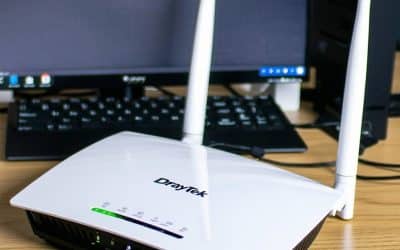Combating Cyber Crime: The Human Factor
A startling reality in today’s interconnected world is that up to 95% of Cyber Attacks can be traced back to human errors. Companies with more employees face a higher risk of falling victim to cyber crime. While cyber criminals do occasionally breach firewalls, it is often unsuspecting employees who grant them access to endpoints, sensitive corporate data or perform actions under the influence of social engineering attacks. Additionally, external parties, such as customers or suppliers, can be subject to cyber attacks and unwittingly (or unknowingly) send fake or altered documents to your company, such as malicious PDF documents or vendor invoices with false bank account details. These instances highlight the need for a combination of technology and human vigilance to effectively combat cyberattacks.
- Human-Centred Security
Cyber Attacks often succeed due to preventable human errors, such as clicking on a phishing email, opening email attachments containing malware, or using easily guessed or repeated passwords. To reduce these risks, businesses must strengthen employee awareness and training, create a culture of security, employ stricter access controls, utilise password managers, enable multi-factor authentication (MFA/2FA), and implement fraud detection processes for incoming documents. - Technological Defences and Automation
While human factors contribute to most Cyber Attacks, technological barriers are essential in keeping determined hackers at bay. Accounts Payable (AP) systems are prime targets for cyber criminals, with 74% of companies experiencing payment fraud attempts. Solutions like Active Email Threat Detection, Endpoint Detection and Response (EDR), Artificial Intelligence (AI), and Data Encryption help to secure corporate networks and sensitive data. - External Threat Prevention
To protect against external threats, IT departments should employ Firewalls, EDR/MDR, AI-driven Cyber Security, and Data Encryption. These systems monitor network traffic, detect malicious activities, and encrypt sensitive data to ensure only authorised parties can access it. However, when paired with a SOC (Security Operation Centre) it is like having your own Cyber Security department available 24/7 to proactively protect you from cyber threats at all times. - Internal Fraud Protection
To counter insider threats, companies can deploy automated monitoring of employee activities, end-to-end payment process automation on a single platform, document-level change detection, and unusual data pattern detection. These measures help identify suspicious behaviour, reduce human error, and prevent fraudulent activities from both external and internal sources.
The key to defending against and defeating Cyber Crime lies in striking the right balance between Advanced Security Solutions and well-trained, vigilant employees. Continuous training, internal testing and awareness programmes can reduce human errors, while technology and automation can prevent attacks from reaching people in the first place. This combined approach is essential for thwarting would-be fraudsters and securing businesses against ever-evolving cyber threats.
Latest News Stories
DrayTek Router Crashes: What you need to know & how to stay protected
Over the weekend, our team identified a recurring issue affecting DrayTek routers— including models we’ve previously supplied and installed. If your business relies on uninterrupted connectivity, this issue could be impacting you. Why are some DrayTek routers...
Tech Planning and Budgeting for IT Managers
Whether you’re new to IT Management or a seasoned professional, a solid technology plan is critical to both you and your businesses’ success in today’s competitive landscape. When you pair that plan with smart budgeting, you’re not just aligning your tech investments...
Why 5 and 75,373 are equally great numbers
Using data to celebrate One2Call’s year in numbers. As we approach the end of 2024, it’s a perfect time to reflect on the incredible milestones we’ve achieved at One2Call. This year has been a testament to our dedication, resilience, and unwavering commitment to...
Our Customers
Testimonials
Yolande Quickfall, Saxton Mee
One2Call are certainly liked by us as they are always keen to help and resolve any problems that we may have and with a quick response.
Steve Garbett, Jaxson Wolf
Very helpful, good staff. they do what they say they can do and on time. they also go the extra mile for the customer which is very refreshing.
Jane, Barca Leeds
Very quick at responding to problems – keep you updated – easy to deal with – very happy with the service !



